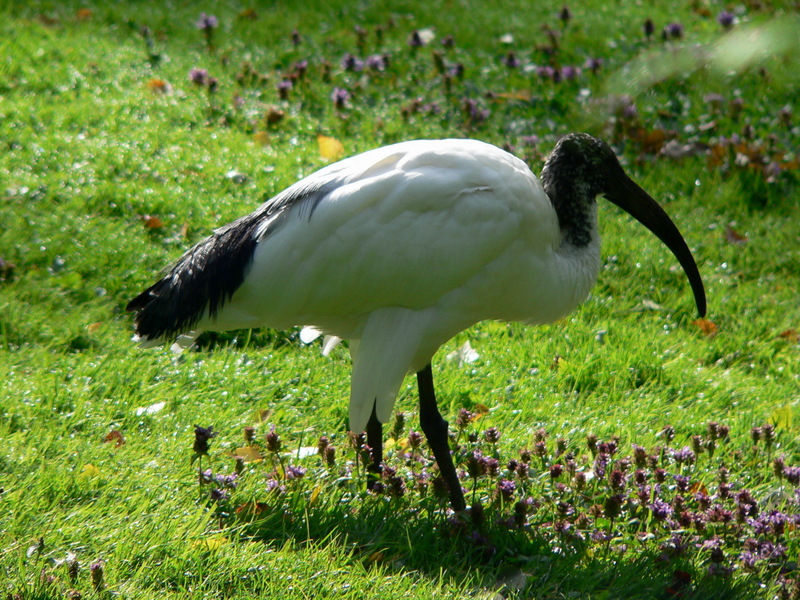|
| Query: Water birds | Result: 195th of 1115 | |
Sacred Ibis (Threskiornis aethiopicus) - Wiki
| Subject: | Sacred Ibis (Threskiornis aethiopicus) - Wiki
| |

| Resolution: 1280x960
File Size: 641012 Bytes
Date: 2005:08:06 08:30:40
Camera: DMC-FZ20 (Panasonic)
F number: f/2.8
Exposure: 10/3200 sec
Focal Length: 720/10
Upload Date: 2007:10:24 14:15:50
|
ERROR : Server Busy(-1105)
ERROR : Server Busy(-1105)
Sacred Ibis (Threskiornis aethiopicus) - Wiki
Sacred Ibis
From Wikipedia, the free encyclopedia
[Photo] Sacred Ibis (Threskiornis aethiopicus). Date 6 August 2005. Photo by http://de.wikipedia.org/wiki/Benutzer:Else2 | Permission is granted to copy, distribute and/or modify this document under the terms of the GNU Free Documentation License, Version 1.2 or any later version published by the Free Software Foundation; with no Invariant Sections, no Front-Cover Texts, and no Back-Cover Texts. A copy of the license is included in the section entitled "GNU Free Documentation License". |
The Sacred Ibis (Threskiornis aethiopicus) is a species of wading bird of the ibis family, Threskiornithidae, which breeds in sub-Saharan Africa, SE Iraq and formerly in Egypt, where it was venerated and often mummified as a symbol of the god Thoth. It has also been introduced into France, Italy, Spain and Australia.
The bird nests in tree colonies, often with other large wading birds such as herons. It builds a stick nest often in a Baobab.and lays 2-3 eggs.
The Sacred Ibis occurs in marshy wetlands and mud flats, both inland and on the coast. It will also visit cultivation and rubbish dumps. It feeds on various fish, frogs and other water creatures, as well as insects. An adult individual is 68 cm long with all-white body plumage apart from dark plumes on the rump. The bald head and neck, thick curved bill and legs are black. The white wings show a black rear border in flight. Sexes are similar, but juveniles have dirty white plumage, a smaller bill and some feathering on the neck.
This bird is usually silent, but occasionally makes some croaking noises.
The introduced and rapidly growing populations in southern Europe are seen as a potential problem, since these large predators can devastate breeding colonies of species such as terns. They also compete successfully for nest sites with Cattle and Little Egrets. The adaptable Ibises supplement their diet by feeding at rubbish tips, which helps them to survive the winter in these temperate regions.
The Sacred Ibis is one of the species to which the Agreement on the Conservation of African-Eurasian Migratory Waterbirds (AEWA) applies.
Sacred Ibis in myth and legend
Venerated and often mummified by Ancient Egyptians as a symbol of the god Thoth, the Ibis was according to Herodotus and Pliny the Elder also invoked against incursions of serpents. It was also said that the flies that brought pestilence died immediately upon propitiatory sacrifices of this bird (Pliny, Natural History Book X Chapter 41).
http://en.wikipedia.org/wiki/Sacred_Ibis
| The text in this page is based on the copyrighted Wikipedia article shown in above URL. It is used under the GNU Free Documentation License. You may redistribute it, verbatim or modified, providing that you comply with the terms of the GFDL. |
|
Comments |
|---|
| | Pharme599 |
|
| Very nice site! |
| | Pharmg929 |
|
| Very nice site! |
| | Pharmg360 |
|
| Very nice site! |
^o^
Animal Pictures Archive for smart phones
^o^
|
|
|

